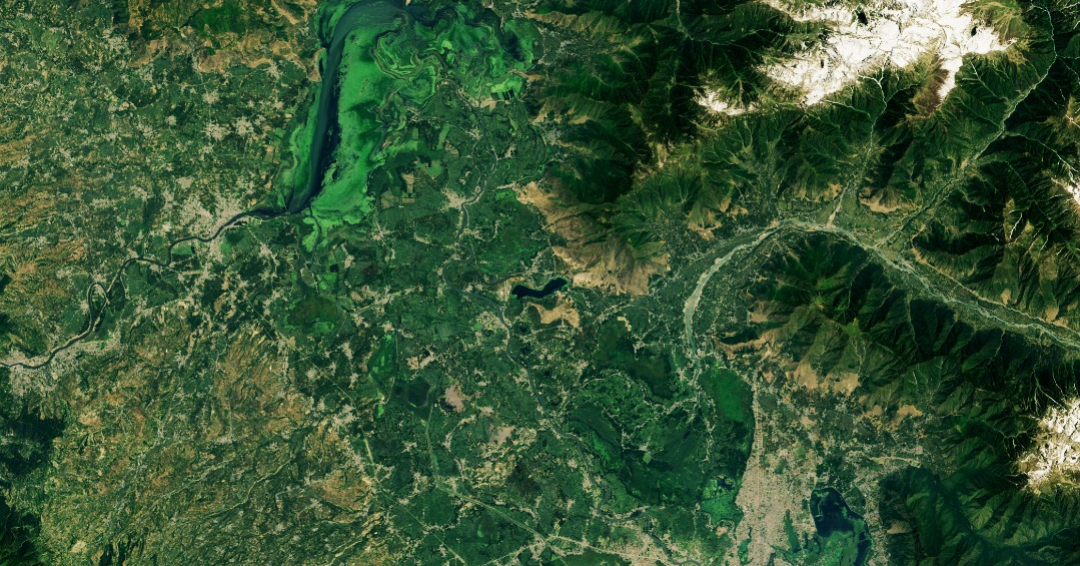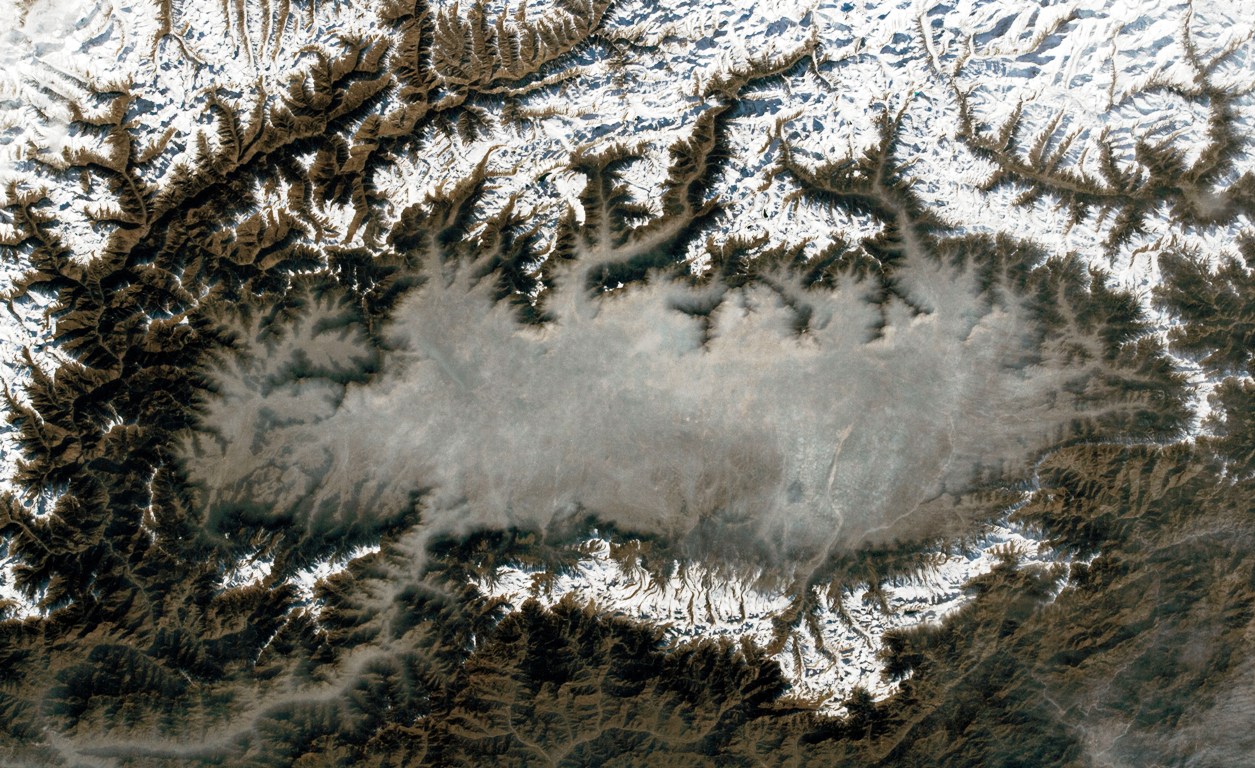SRINAGAR: American space agency, NASA has released a photograph of Kashmir, taken from the satellite, to show that the two main lakes of the region are shrinking. Wular and Dal, the two landmark lakes play a vital role in regulating water flow from the Himalayan glaciers and along the Jhelum River, acting as a crucial water source for drinking and irrigation purposes.

Here is the detailed report that explains the photograph, and its context. The report has been written by Emily Cassidy and the NASA Earth Observatory image was taken by Wanmei Liang, using Landsat data from the US Geological Survey. The photograph was taken on June 23, 2020.
“Two lakes surrounded by the high Himalaya Mountains are remnants of a much larger ancient lake in India’s Kashmir Valley. While the freshwater lakes are some of the largest in the Jammu and Kashmir region of northern India, in recent years they have been in decline.
The two lakes—Wular and Dal—are visible in this image, acquired on June 23, 2020, by the Operational Land Imager (OLI) on Landsat 8. Both lakes regulate water flowing down from Himalayan glaciers and along the Jhelum River, supplying water for drinking and irrigation.
Dal, in the lower right of the image, is the smaller of the two water bodies. Dal is located in the heart of Srinagar—the largest city in the valley. Floating houseboats, markets, and marshes lure tourists to the lake. It is surrounded by terraced gardens—laid out in the 16th and 17th century by Mughal emperors—that are lined with fountains and planted with a variety of flowers, herbs, and aromatic plants.
Wular Lake, to the left in the image, is the largest freshwater lake in India, and among the largest in Asia. This 17-square-mile (45-square-kilometre) lake along the Jhelum River provides fish and freshwater to nearby residents. Several wetlands are located on the fringes of the lake and serve as habitat for migratory birds, such as ducks, shorebirds, geese, and cranes. Because of its significance for biodiversity and livelihoods, Ramsar International designated the lake as a “wetland of international importance” in 1990.
Bright green flora stands out in the image on the eastern side of Wular. An influx of sediment and nutrients into the lake over the past few decades has contributed to the rapid growth in algae and aquatic vegetation. The lake is now suffering from eutrophication—an overgrowth of plants and algae that can eventually cause oxygen depletion in aquatic environments.
The conversion of forests to paved urban areas is a major driver of the change in water quality. Land conversion has delivered heavy sediment and nutrient loads into the lake, and untreated sewage from urban areas has also contributed. Researchers in India used water samples and data from Landsat satellites to assess the biological health of the lake. They found that about 57 percent of Wular Lake was eutrophic in 2018.
Some of the bright green area on the eastern side of Wular Lake used to be open water. Nutrient-rich sediment and aquatic vegetation have filled in parts of the lake and contributed to its shrinking in recent decades. In a 2022 study, researchers in India—using data from the Indian Space Research Organization’s (ISRO) LISS-IV instrument—found that Wular Lake’s open water area had shrunk in size by about one-quarter between 2008 and 2019.
The smaller Dal Lake has suffered a similar fate in response to land cover change. Researchers in Srinagar found that land conversion to urban development in the basin had worsened the lake’s water quality and contributed to its reduced size. They found that between 1980 and 2018 the lake shrunk in area by 25 percent.”

This is the second photograph that NASA released of Kashmir in recent days. The last such photograph was this winter when it released a photograph showing Kashmir in a haze.














